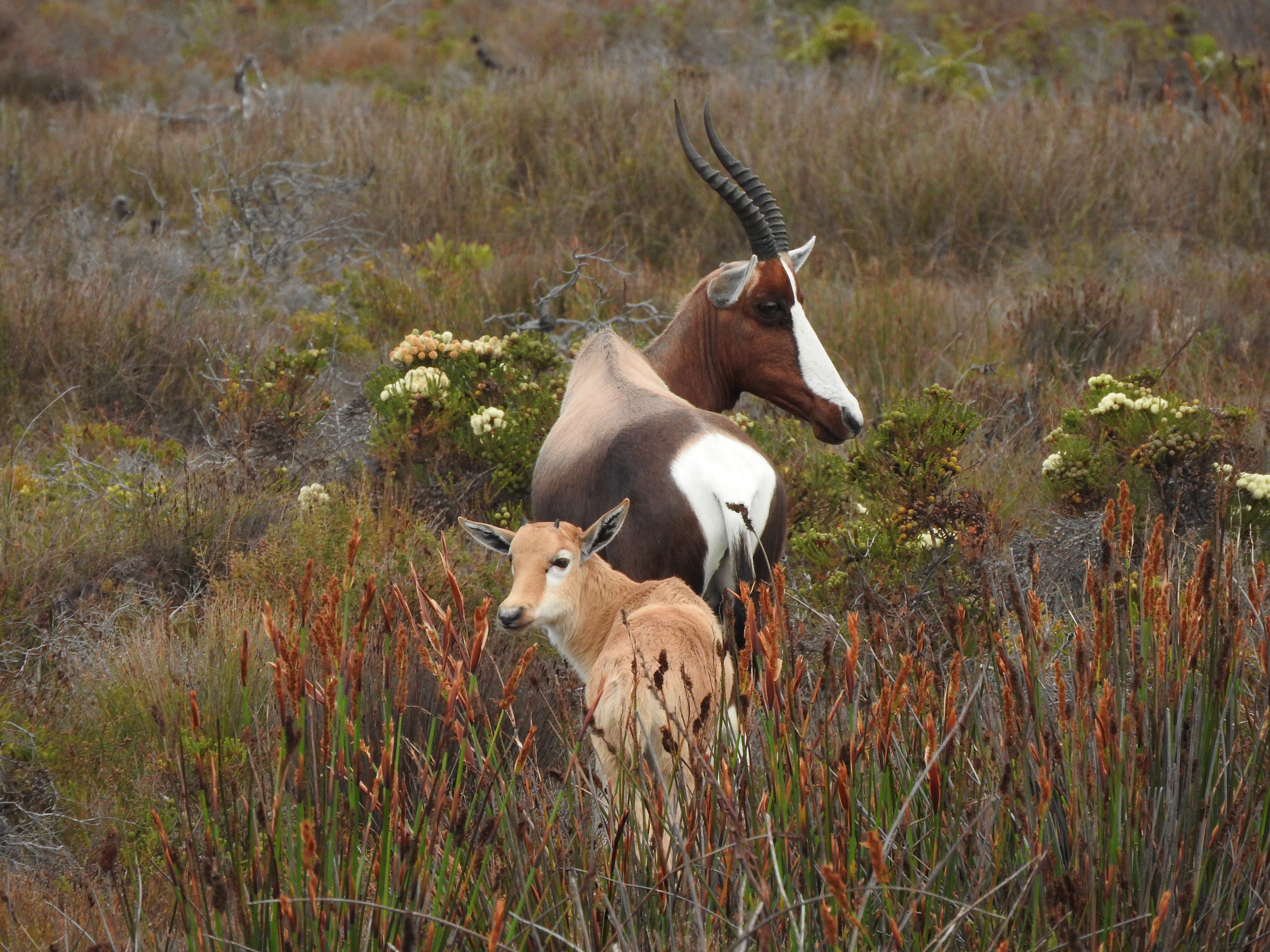Bontebok on:
[Wikipedia]
[Google]
[Amazon]
The bontebok (''Damaliscus pygargus'') is an

 Bontebok are not good jumpers, but they are very good at crawling under things. Mature males form territories and face down other males in displays and occasionally fight them.
Bontebok are not good jumpers, but they are very good at crawling under things. Mature males form territories and face down other males in displays and occasionally fight them.
antelope
The term antelope is used to refer to many species of even-toed ruminant that are indigenous to various regions in Africa and Eurasia.
Antelope comprise a wastebasket taxon defined as any of numerous Old World grazing and browsing hoofed mammal ...
found in South Africa, Lesotho and Namibia. ''D. pygargus'' has two subspecies; the nominate subspecies (''D. p. pygargus''), occurring naturally in the Fynbos and Renosterveld areas of the Western Cape, and the blesbok
The blesbok or blesbuck (''Damaliscus pygargus phillipsi'') is a subspecies of the bontebok antelope endemic to South Africa, Eswatini and Namibia. It has a distinctive white face and forehead which inspired the name, because ''bles'' is the Afri ...
(''D. p. phillipsi'') occurring in the Highveld.
The bontebok is related to the common tsessebe
The common tsessebe or sassaby (''Damaliscus lunatus lunatus'') is the southern, nominate subspecies of ''Damaliscus lunatus'', although some authorities have recognised it as an independent species. It is most closely related to the Bangweulu ts ...
.
Description
The bontebok is a tall, medium-sized antelope. They typically stand high at the shoulder and measure along the head and body. The tail can range from . Body mass can vary from . Males are slightly larger and noticeably heavier than females.Burnie, D. and Wilson, D.E. (eds.), ''Animal: The Definitive Visual Guide to the World's Wildlife''. DK Adult (2005), The bontebok is a chocolate brown colour, with a white underside and a white stripe from the forehead to the tip of the nose, although there is a brown stripe across the white near the eyes in most blesbok. The bontebok also has a distinctive white patch around its tail (hence the Latin name), while this patch is light brown/tan in the blesbok. The horns of the bontebok are lyre-shaped and clearly ringed. They are found in both sexes and can reach a length of half a metre.Habitat
Blesbok live in the Highveld, where they eat shortgrass
Poaceae () or Gramineae () is a large and nearly ubiquitous family of monocotyledonous flowering plants commonly known as grasses. It includes the cereal grasses, bamboos and the grasses of natural grassland and species cultivated in lawns and ...
es, while bontebok are restricted to the coastal Fynbos and the Renosterveld. They are diurnal, though they rest during the heat of the day. Herds contain only males, only females, or are mixed, and do not exceed 40 animals for bontebok or 70 for blesbok.

Behavior
 Bontebok are not good jumpers, but they are very good at crawling under things. Mature males form territories and face down other males in displays and occasionally fight them.
Bontebok are not good jumpers, but they are very good at crawling under things. Mature males form territories and face down other males in displays and occasionally fight them.
Conservation
Bontebok were once extensively killed as pests, and by the early 20th century were reduced to a wild population of just 17 individuals. The species was saved from certain extinction when Dutch farmer Alexander van der Bijl corralled the remaining individuals into a fence, which they were unable to jump out of. In 1931, this herd of 17 was transferred to Bontebok National Park, which was established for the explicit purpose of conservation of the species. By the time the park was relocated to better suit the needs of the bontebok in 1961, the herd had grown to 61 members. Today, their population is estimated to range from 2,500 to 3,000, all descendants of the original herd of 17 members. While Bontebok are extinct in their natural habitat, they have increased in population to the point where they are now very abundant and avidlyfarm
A farm (also called an agricultural holding) is an area of land that is devoted primarily to agricultural processes with the primary objective of producing food and other crops; it is the basic facility in food production. The name is used f ...
ed, because they are popular quarry for hunters and are easy to sustain.
In culture
The bontebok is the provincial animal of Western Cape.References
* Skead, C.J., 1980. ''Historical mammal incidence in the Cape Province Volume 1. The Department of Nature and Environmental Conservation of the Provincial Administration of the Cape of Good Hope, Cape Town''. {{Taxonbar, from=Q1009881 Damaliscus Mammals of South Africa Mammals of Lesotho Mammals of Namibia Afrikaans words and phrases Mammals of Southern Africa Fynbos Renosterveld Mammals described in 1767 Taxa named by Peter Simon Pallas